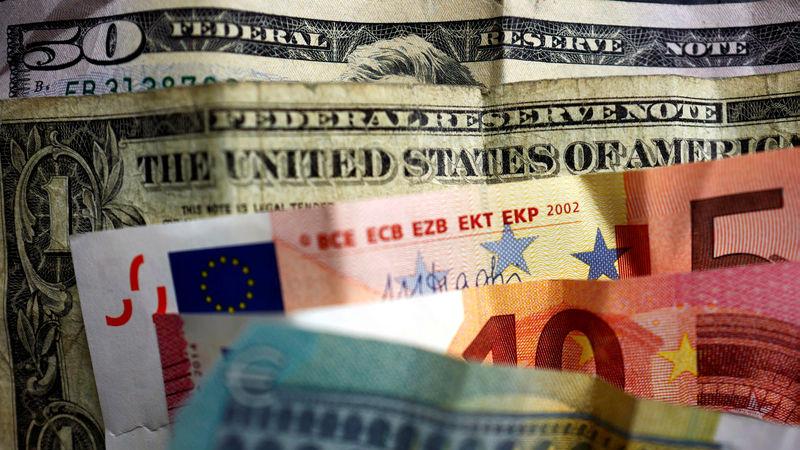Dollar : 2024 stabilizes after sharp CPI-induced fall; euro hands back some gains

The U.S. dollar steadied in European trade Thursday, after dropping to multi-week lows overnight in the wake of a milder U.S. inflation report, which brought Fed rate cuts back into focus.
At 04:25 ET (08:25 GMT), the Dollar Index, which tracks the greenback against a basket of six other currencies, traded 0.1% higher at 104.285, having fallen to a five-week low just below 104 overnight.
Dollar on back foot after key inflation data
The dollar remains on the back foot after the latest U.S. inflation data raised expectations the Federal Reserve will deliver two interest rate cuts this year, probably starting in September.
Wednesday’s consumer price index rose by 0.3% in April, below an expected 0.4% gain, which came as a relief to markets after sticky consumer prices in the first quarter had led to a sharp paring of rate cut bets and even stoked some worries of an additional hike.
The data also resulted in U.S. Treasury yields sinking to six-week troughs, as traders reassessed the likely path of the Fed’s monetary policy.
“Markets have given a greater weight to the encouraging news coming from two days of inflation figures, which has caused the dollar to almost entirely erase the gains after the CPI disappointment in mid-April,” said analysts at ING, in a note.
There are a number of Fed speakers due to opine later in the session, but it’s likely investors will need concrete evidence if rate cut expectations are to be changed drastically from now.
“Our preferred call at this stage is not for a continuation of a dollar decline until the end of May, but instead a period of quiet trading with little sense of direction and low volatility. That’s mainly because hard data is needed to move the needle substantially on Fed pricing, and the next key release – core PCE – is only on 31 May,” ING added.
Euro retreats from earlier highs
In Europe, EUR/USD traded 0.1% lower to 1.0867, with the euro retreating slightly Thursday after earlier climbing to its highest since March 21.
The ECB is widely expected to start cutting interest rates from a record high in June, and markets now see up to three rate cuts this year, or two beyond June, most likely in September and December.

“The 1.0900 level should not be a very strong resistance if U.S. data – for example, jobless claims today – adds pressure on the dollar. However, a move to the 1.1000 benchmark levels seems premature given the still sticky inflation picture in the U.S.,” ING said.
GBP/USD fell 0.1% to 1.2675, with sterling handing back some of the previous session’s gains when it climbed above 1.27 for the first time since April 10.
The Bank of England is also expected to cut rates from a 16-year high this summer, but recent stronger than expected GDP growth could delay this until after the ECB moves.
Yen posts minor gains after weak GDP data
In Asia, USD/JPY fell 0.2% to 154.64, with the yen benefiting from the dollar’s weakness, but the pair remained well above levels hit earlier in May, when the government was seen intervening in currency markets.

The yen’s recovery stalled as gross domestic product data showed the Japanese economy shrank much more than expected in the first quarter, raising doubts over just how much headroom the Bank of Japan has to keep raising interest rates.
USD/CNY traded largely flat at 7.2187, as sentiment towards China remains weak after Washington imposed stricter trade tariffs on China’s key industries, such as electric vehicles, medicines and solar technology.